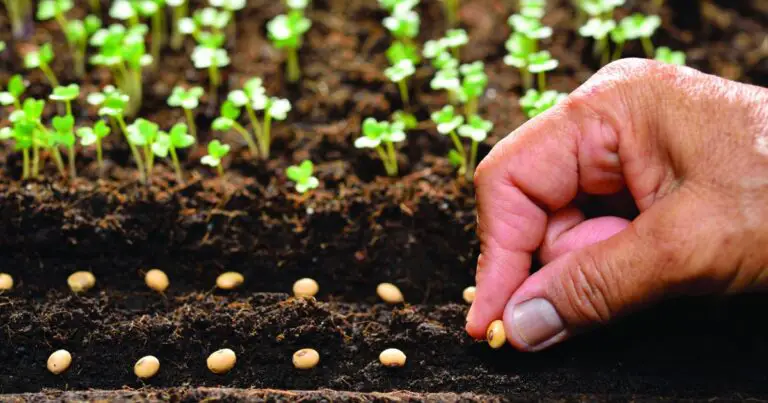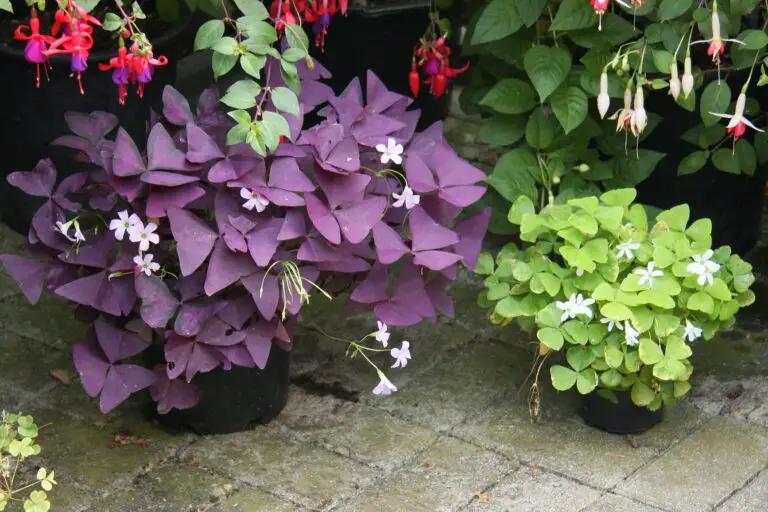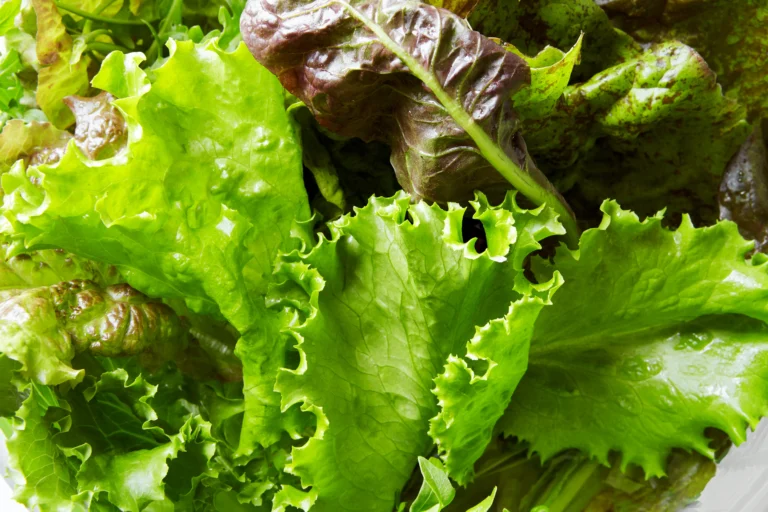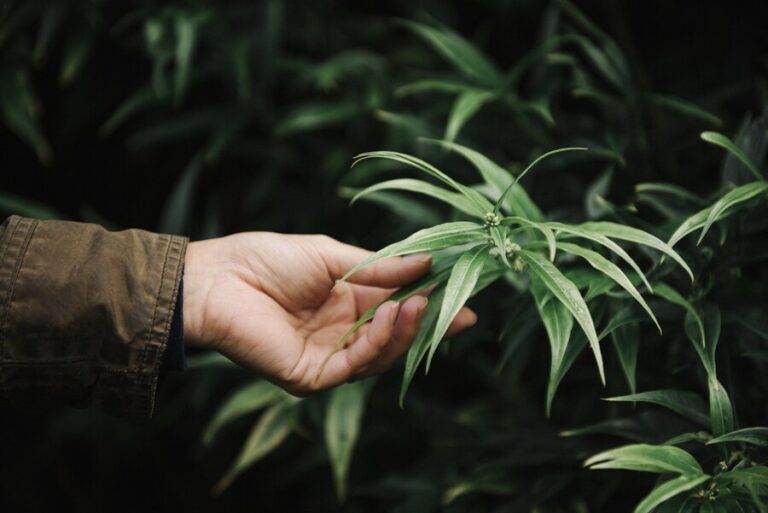Echinacea Planting: Thriving Vibrant Coneflower Care
Table of Contents
Benefits of Growing Echinacea Plants
Echinacea plants, also known as coneflowers, offer a plethora of benefits to gardeners and enthusiasts alike. These native North American perennials not only add vibrant color and beauty to a garden but also attract pollinators like bees and butterflies, contributing to the overall ecosystem’s health and biodiversity. Additionally, echinacea plants are renowned for their medicinal properties, with their roots, leaves, and flowers being used in herbal remedies to boost the immune system and alleviate cold symptoms.
Moreover, growing echinacea plants can be a rewarding experience due to their low maintenance requirements and resilience to various environmental conditions. These hardy plants can thrive in different soil types and climates, making them suitable for a wide range of gardening settings. Whether you’re a novice gardener or an experienced horticulturist, incorporating echinacea plants into your landscape can enhance its visual appeal while reaping the numerous benefits these versatile perennials offer.

Ideal Soil Conditions for Coneflowers
Coneflowers, also known as Echinacea, thrive in well-drained soil with a slightly acidic to neutral pH level between 6.0-7.0. These hardy plants prefer soil that is rich in organic matter, providing essential nutrients for healthy growth and vibrant blooms. Sandy loam or loamy soil textures are ideal for Echinacea, offering a good balance of drainage and moisture retention.
Avoid waterlogged or compacted soil, as it can result in root rot and stunted growth. To improve soil structure and fertility, consider amending the soil with compost or well-rotted manure before planting your Coneflowers. This will not only enhance drainage but also encourage beneficial soil organisms that support plant health and vitality. Regularly testing the soil for nutrient levels and pH can help you adjust your soil amendments accordingly to ensure your Coneflowers receive the best growing conditions possible.
Here are the ideal soil conditions for growing coneflowers (Echinacea spp.):
| Aspect | Ideal Conditions |
| Sun Exposure | Full sun |
| Soil pH | Varies, but prefers well-draining fertile soil with pH of 6.0-7.0. |
| Soil Type | Can thrive in a variety of soil types including sandy, rocky and clay soils. |
| Additional Notes | Coneflowers are drought-tolerant. Loosen the soil to a depth of 12 to 15 inches and mix in compost or aged manure. While they can tolerate poor soil, result may vary. |
Coneflowers are beautiful native wildflowers that attract butterflies, bees, and songbirds. They bloom from mid-summer until frost and are hardy in Zones 3 to 9.
Sunlight Requirements for Thriving Coneflowers
Coneflowers, also known as Echinacea, are vibrant and hardy perennials that thrive in sunny locations. These plants require at least 6 hours of direct sunlight each day to reach their full potential. In areas with scorching sun, some afternoon shade may be beneficial to prevent wilting and sunburn on the delicate petals. Providing adequate sunlight not only promotes robust growth but also enhances the plant’s ability to produce an abundance of colorful blooms.
When selecting a site for your coneflowers, consider the angle of the sun throughout the day to ensure consistent exposure. South or west-facing locations are typically ideal for these sun-loving plants. Additionally, avoid planting them in the shadow of tall structures or trees that may obstruct the sunlight. By meeting the sunlight requirements of coneflowers, you can enjoy a lush and thriving garden filled with these beautiful and beneficial plants.

Watering Tips for Echinacea Plants
Echinacea plants are known for their drought tolerance once established, making them relatively low-maintenance in terms of watering. However, during the initial growth period and blooming season, proper watering is crucial for healthy plant development. These plants prefer well-draining soil and do not thrive in consistently wet conditions that can lead to root rot.
To ensure proper watering of Echinacea plants, it is essential to follow a “deep and infrequent” watering schedule. Water the plants deeply, allowing the soil to dry out between watering sessions. Aim to water at the base of the plants rather than overhead to prevent foliage diseases. Observing the plant’s leaves for signs of wilting or drooping can also help indicate when watering is needed. Strike a balance between providing enough moisture for the plants without causing waterlogged conditions, and your Echinacea plants will reward you with vibrant blooms throughout the growing season.
Here are some watering tips for Echinacea plants (also known as coneflowers):
| Aspect | Tips |
| Timing | Water the plants in the morning or evening when the temperature is cooler. Avoid watering during the hottest part of the day. |
| Watering Method | Avoid watering the leaves directly. Instead, focus on watering the soil around the plant’s base. This helps prevent fungal diseases and keeps the foliage dry. |
| Delivery System | Consider using a soaker hose or drip irrigation system. These methods deliver water directly to the plant’s roots, reducing water waste and minimizing the risk of fungal issues. |
| Established Plants | Once Echinacea plants are established, they are fairly drought-tolerant. Water them only during dry periods, avoiding overwatering to prevent root rot. |
Remember, Echinacea plants are native wildflowers loved by butterflies, bees, and songbirds.
Choosing the Right Echinacea Varieties
When it comes to choosing the right Echinacea varieties for your garden, it’s important to consider factors such as bloom color, height, and disease resistance. With a wide range of options available, selecting the perfect Echinacea plants can elevate the beauty of your garden while also ensuring their longevity and health.
Some popular Echinacea varieties include the ‘Magnus’ which boasts vibrant purple-pink petals and grows up to 3 feet tall, and the ‘White Swan’ with its elegant white blooms that attract butterflies and bees. For those looking to add a pop of color, the ‘Hot Papaya’ variety features unique double blooms in shades of orange and red, adding a bold statement to any garden bed. By carefully selecting Echinacea varieties that complement each other in terms of color and height, you can create a visually stunning landscape that also supports pollinators and beneficial insects.
Planting Echinacea Seeds vs. Transplants
When deciding whether to plant echinacea seeds or transplants in your garden, there are several factors to consider. Planting echinacea seeds allows you to have a greater variety of cultivars to choose from, as seeds often come in a wider selection compared to transplants. Additionally, sowing seeds can be a cost-effective option for gardeners looking to grow echinacea in larger quantities, as seeds are generally more budget-friendly than transplants.
On the other hand, using transplants offers the advantage of a head start in the growth process. Transplants are already established plants with developed root systems, which can lead to quicker flowering and overall plant maturity compared to seeds. This can be beneficial for gardeners looking for immediate results or those who live in climates with shorter growing seasons where time is of the essence.
Mulching Techniques for Coneflowers
Mulching plays a crucial role in maintaining the health and vigor of your coneflowers. By applying an adequate layer of mulch around the base of the plants, you can help retain soil moisture, suppress weed growth, and protect the roots from extreme temperatures. Organic mulches like shredded bark, straw, or compost are excellent choices as they gradually break down, adding nutrients to the soil as they decompose. When mulching coneflowers, make sure to leave a small gap around the stems to prevent moisture-related diseases and allow for air circulation.
In addition to its functional benefits, mulch can also enhance the aesthetic appeal of your coneflower beds. Choosing a mulch that complements the colors and textures of your plants can create a visually pleasing landscape. When selecting a mulch, consider factors such as the size of the mulch particles, the color, and how well it integrates with the overall design of your garden. By carefully choosing and applying mulch, you can not only improve the health of your coneflowers but also elevate the beauty of your garden space.

Pruning Echinacea Plants for Healthy Growth
When it comes to pruning Echinacea plants for healthy growth, timing is crucial. In late winter or early spring, before new growth emerges, it’s the ideal time to cut back the previous year’s dead foliage. Use a sharp pair of garden shears to trim the plant down to a few inches above ground level, ensuring a clean cut to promote new growth. Removing the old foliage helps prevent disease and encourages the plant to focus its energy on producing vibrant blooms.
While Echinacea plants are known for their drought tolerance and low maintenance, a little pruning can go a long way in ensuring their optimal health and vitality. Regular deadheading, the practice of removing spent flowers, can prolong the blooming season and promote continuous flower production. Simply snip off the faded blooms down to the next set of healthy leaves or buds to stimulate new growth. By incorporating pruning into your Echinacea care routine, you can enjoy a garden filled with thriving, colorful Coneflowers throughout the growing season.
Dealing with Common Pests and Diseases
One of the most common pests that can affect Echinacea plants is the powdery mildew fungus. This fungal disease appears as a white powdery substance on the leaves and can weaken the plant if left untreated. To combat powdery mildew, make sure to provide adequate spacing between plants for proper air circulation, avoid overhead watering, and remove any infected plant parts promptly. Additionally, applying fungicides containing sulfur or potassium bicarbonate can help control the spread of powdery mildew.
Another common pest that gardeners may encounter when growing Echinacea is the aster yellows phytoplasma. This infectious disease is carried by leafhoppers and can cause yellowing of leaves, stunted plant growth, and abnormal flower development. Unfortunately, there is no cure for aster yellows once a plant is infected, so prevention is key. To minimize the risk of infection, remove any affected plants immediately, control leafhopper populations through insecticidal measures, and ensure proper plant nutrition and care to boost plant health and resilience against diseases.
Here’s a tabular summary of common pests and diseases that can affect Echinacea plants:
| Pest/Disease | Description |
| Aphids | Small insects that feed on the sap of the plant. They cause yellowing of leaves and stunted growth. |
| Spider Mites | Tiny arachnids that feed on sap, leading to yellowing or bronzing of leaves and potential defoliation. |
| Whiteflies | Small, winged insects that feed on sap, causing yellowing and stunted growth. They can transmit viral diseases. |
| Thrips | Tiny insects that feed on plant tissue, causing discoloration and distortion of flowers. They can also transmit viral diseases. |
| Powdery Mildew | A fungal disease that affects leaves, resulting in a powdery white coating. |
| Aster Yellows | A disease transmitted by leafhoppers, causing abnormal growth and green flowers. |
| Root Rot | A disease affecting the roots, leading to plant decline. |
| Japanese Beetles | Beetles that can damage leaves and flowers. |
Fertilizing Coneflowers for Maximum Blooms
Fertilizing coneflowers is a crucial aspect of maximizing their bloom potential. These robust perennials benefit from a balanced fertilizer application in early spring when new growth emerges. Opt for a slow-release, all-purpose fertilizer containing equal parts nitrogen, phosphorus, and potassium to promote overall plant health and vibrant blooms. Avoid using excessive amounts of fertilizer, as this can lead to excessive foliage growth at the expense of flower production.
Once your coneflowers have been fertilized, it’s essential to water them thoroughly to ensure the nutrients are absorbed effectively. Adequate moisture is key to the uptake and utilization of the fertilizers, helping the plants thrive and produce an abundance of colorful blooms. Monitor the soil moisture levels regularly and adjust your watering schedule as needed to maintain optimal growing conditions for your coneflowers.
Propagation Methods for Echinacea Plants
Echinacea plants can be propagated through various methods, providing gardeners with options suited to their preferences and resources. One common method is division, which involves splitting a mature plant into smaller sections to replant. This technique is typically done in the spring or fall when the plant is not actively flowering or setting seeds. By using a sharp knife or spade to separate the plant’s root ball, ensuring each division has viable roots and foliage, gardeners can successfully propagate their Echinacea plants through this method.
Another propagation method for Echinacea plants is through seed sowing. Harvesting seeds from existing plants or purchasing them from reputable sources allows gardeners to grow new plants from scratch. Sowing Echinacea seeds in well-draining soil, covering them lightly, and providing adequate moisture and sunlight can lead to successful germination. This method offers a more cost-effective way to expand your Echinacea population and experiment with different varieties, contributing to the diversity and beauty of your garden or landscape.

Overwintering Coneflowers
To successfully overwinter coneflowers, it is essential to prepare the plants for the cold months ahead. Start by ensuring that the soil around the coneflowers is well-drained to prevent waterlogging, which can lead to root rot. Additionally, consider adding a layer of mulch around the base of the plants to help insulate the roots and protect them from frost.
Some gardeners also choose to trim back the foliage of coneflowers in the fall to promote healthier growth in the following season. By cutting back the stems to a few inches above the ground, you can reduce the risk of disease and pest infestations while also tidying up the garden for the winter months. Properly preparing coneflowers for overwintering can make a significant difference in the plant’s resilience and overall health come springtime.
Harvesting Echinacea Seeds and Flowers
When it comes to harvesting echinacea seeds and flowers, timing is crucial to ensure the best results. Echinacea flowers should be harvested when they are in full bloom, usually in late summer to early fall. Select flowers that are fully open with vibrant petals to maximize seed production. To harvest the seeds, wait until the flower heads have dried on the plant and the cone in the center has turned dark brown. Gently cut the cone off the plant and place it in a paper bag to finish drying further.
Once the echinacea seed heads are completely dried, shake them inside the bag to release the seeds. Sieve the contents to separate the seeds from the chaff. Store the seeds in a cool, dry place in airtight containers until you are ready to sow them. Properly harvested and stored echinacea seeds can remain viable for several years, allowing you to continue growing these beautiful and beneficial plants in your garden.
Using Echinacea in the Garden and Landscape Design
Echinacea plants not only offer medicinal benefits but also add aesthetic value to garden and landscape designs. Their vibrant, daisy-like flowers come in various shades of purple, pink, and white, making them versatile for different color schemes. Whether used as focal points in flower beds or as border plants along pathways, echinacea can provide a pop of color and attract pollinators like bees and butterflies to your garden.
In landscape design, echinacea’s height and structure can create visual interest and balance in mixed plantings. Taller varieties work well as backdrop plants behind lower-growing flowers or ornamental grasses, while shorter cultivars can be clustered together for a massed display. Additionally, the seed heads of echinacea can persist through the winter, adding texture and architectural appeal to the garden when other plants have faded. By strategically incorporating echinacea into your garden design, you can enjoy both the beauty and practicality of these hardy perennials year after year.
Success Stories and Testimonials from Echinacea Growers
Growing Echinacea plants can be a fulfilling and rewarding experience for gardeners of all levels. Many enthusiasts have shared their success stories and testimonials, highlighting the beauty and resilience of these vibrant flowers. One gardener shared, “I was amazed by how easily Echinacea plants adapted to my garden. Their colorful blooms attracted bees and butterflies, creating a lively and thriving ecosystem in my backyard.”
Another grower expressed their delight with the medicinal properties of Echinacea, stating, “I started growing Echinacea for its reputed immune-boosting benefits. Not only did I enjoy the visual appeal of the flowers, but I also found it satisfying to harvest and create my own herbal remedies. It’s truly a versatile plant that adds value to both my garden and my health routine.” Such testimonials showcase the versatility and allure of Echinacea plants, making them a popular choice among gardening enthusiasts.
To Know More About Growing Echinacea, Watch This Video!
Can Echinacea plants survive in cold winter climates?
Yes, Echinacea plants can survive in cold winter climates with proper care and maintenance. It is important to provide adequate mulching and protection during the winter months to ensure their survival.
How often should Echinacea plants be fertilized?
Echinacea plants should be fertilized in the spring with a balanced fertilizer. It is recommended to fertilize them once a month during the growing season to promote maximum blooms.
What are some creative ways to use Echinacea in garden and landscape design?
Echinacea can be used as a focal point in a flower bed, as a border plant along a pathway, or even in container gardens. Their vibrant colors and unique shapes make them a great addition to any garden design.
How do you know when Echinacea seeds are ready to be harvested?
Echinacea seeds are ready to be harvested when the flower heads have dried out completely. Simply cut the flower heads off the plant and allow them to dry further before collecting the seeds.
Can Echinacea plants attract beneficial insects to the garden?
Yes, Echinacea plants can attract beneficial insects such as bees and butterflies to the garden. Their nectar-rich flowers are a favorite among pollinators, helping to promote a healthy ecosystem in the garden.






